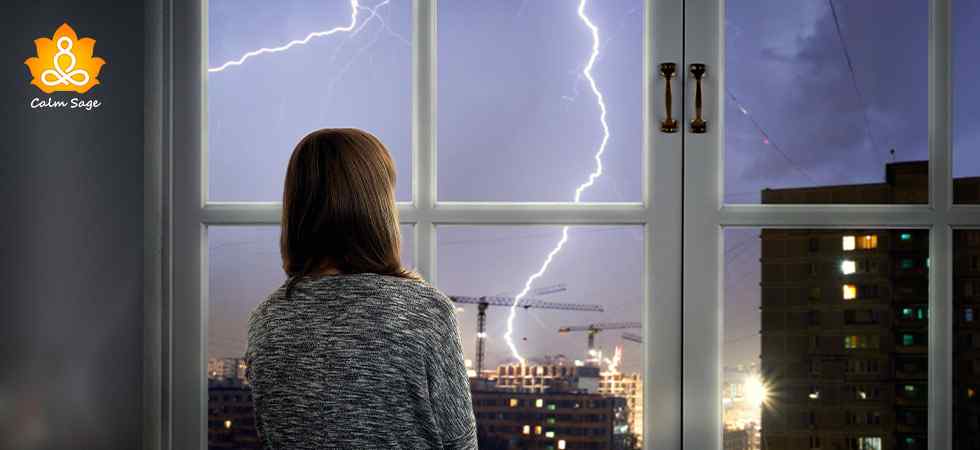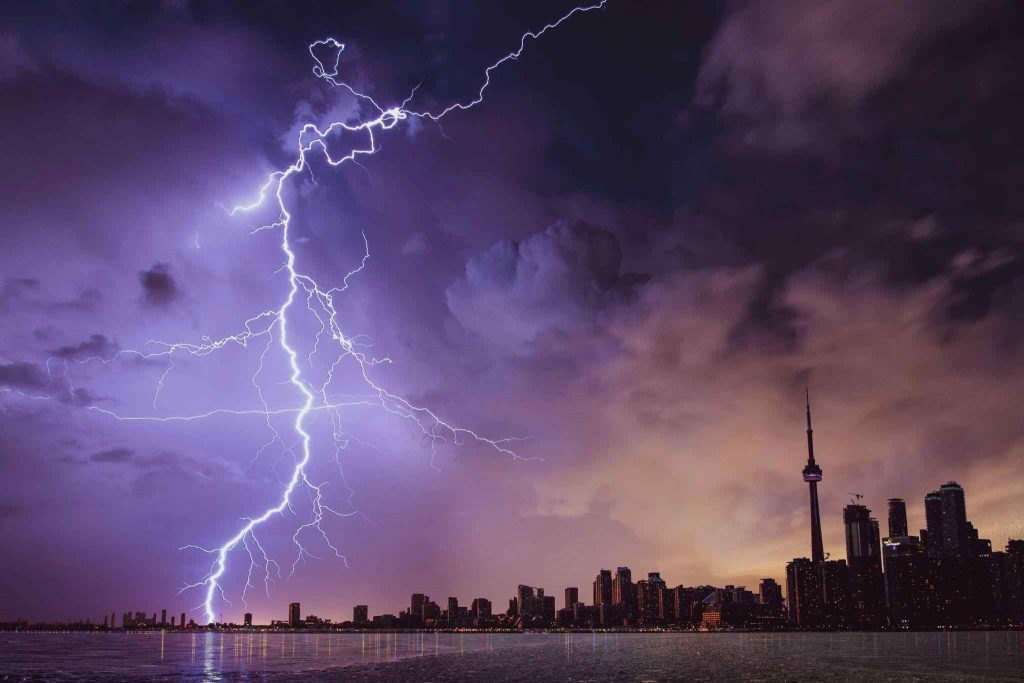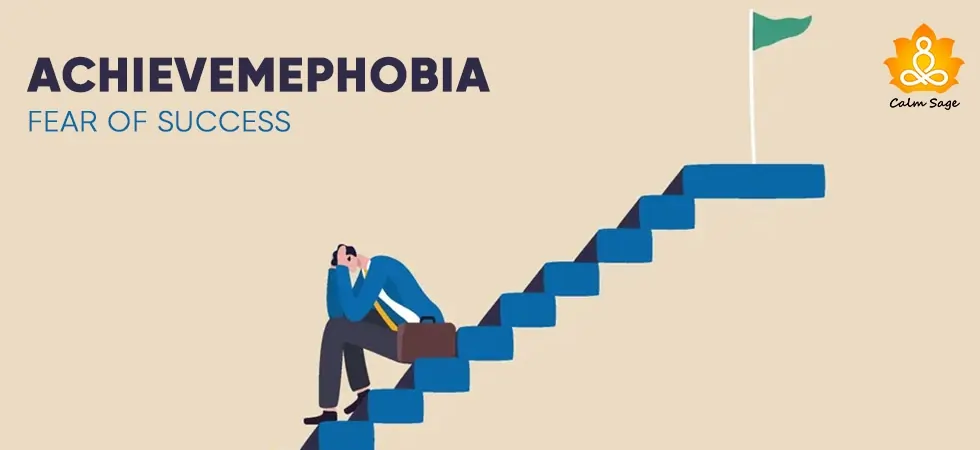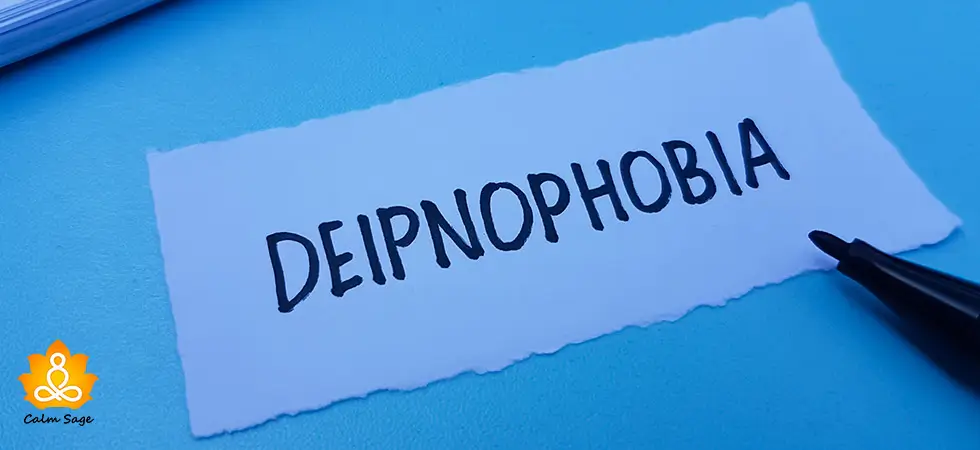Coping With Astraphobia: The Fear Of Thunder And Lightning

It’s not uncommon for pets (especially dogs) to be scared of thunder and lightning but when the literal storm outside begins to brew a storm inside, or in other words, when the heavy thunderstorm makes you feel anxious, jittery, and nervous, then it can be a sign of astraphobia, the fear of thunder and lightning.
Trust me when I say that there’s no need to feel embarrassed about your irrational fear of thunder. One of my loved ones (my favorite person in the world) struggles with similar fear and I’ve seen them struggle with anxiety attacks. When I say that, while uncommon, this fear can cause severe anxiety and panic, believe me.
You are not overreacting or imagining the fear. Astraphobia is a very valid specific phobia of thunder, lightning, and storm that can cause a severe handicap in your daily life.
Let’s explore, in this article, what is astraphobia, the symptoms, what causes astraphobia, and how you can cope with the fear of thunder and lightning.
What Is Astraphobia, The Fear Of Thunder?

Astraphobia or the fear of thunderstorms is a specific phobia that can be triggered by thunder, lightning, and storms. More often than not, astraphobia is seen in children but in some cases, the fear of thunderstorms can continue well into adulthood.
If you or your loved one is struggling with this specific phobia then you may experience severe anxiety and even panic attacks when you know a storm is in the weather forecast. Many people find themselves reading weather reports quite excessively and this behavioral pattern can also trigger anxiety or panic.
Astraphobia is not yet a recognized phobia or a mental health disorder in the DSM-5 but can be considered a specific phobia.
The Symptoms Of Astraphobia
As astraphobia can trigger anxiety and panic, the symptoms of the fear of thunderstorms are not much different than the symptoms of anxiety.
Astraphobia symptoms can include:
- Feeling overwhelmed
- Experiencing intense anxiety
- Excessive worry
- Sweating
- Tremors or shaking
- Shortness of breath
- Increased heart rate
- Heart palpitations
- Nausea
- Stomach ache
- Chest ache
- Dizziness
Note: Keep in mind that only a mental health professional can make an accurate diagnosis. If you or your loved one suspects a fear of thunderstorms, then it is recommended you speak to a professional for guidance, consultation, diagnosis, and treatment.
What Causes Astraphobia?

Many factors can contribute to your fear of thunderstorms, for example, living through a weather-related trauma (surviving floods or other natural disasters) can cause astraphobia. In other cases, a family history of a specific phobia or intergenerational trauma can also be a contributing factor in causing astraphobia.
Many people may even struggle with astraphobia or the fear of thunderstorms for no valid reasons.
With a professional’s guidance and consultation, astraphobia can be diagnosed. A doctor may ask you some questions about astraphobia symptoms and past experiences to determine the phobia and its potential causes.
A doctor may ask questions such as:
- Have you experienced the symptoms for more than six months?
- Do you often avoid thunderstorms, even in movies?
- Do you feel extreme panic or dread when you know a storm is in the forecast?
- Are your symptoms interfering with other aspects of your life?
How Can Astraphobia Be Treated?
Similar to other specific phobias, astraphobia (the fear of thunderstorms) can be treated with the help of psychotherapy, medications, self-help, or a combination of all. Some of the most common astraphobia treatments include:
1. Psychotherapy
In many cases (for many mental and emotional conditions), the first course of treatment is psychotherapy. Psychotherapy for phobia can include:
- Cognitive-behavioral therapy: CBT can help you reframe your negative experiences and replace them with productive and positive ones.
- Dialectical-behavioral therapy: DBT is another form of talk therapy that combines traditional therapy with stress-reduction techniques to help you work through your phobia and reduce symptoms of anxiety and panic.
- Exposure therapy: One of the most common therapy approaches when it comes to treating specific phobias, exposure therapy can help you slowly get comfortable with your triggers. In the case of astraphobia, exposure therapy can mean exposing yourself to the sounds of thunderstorms. Exposure therapy should only be performed under the guidance of a professional mental health therapist.
2. Medications
Since the fear of thunderstorms causes anxiety-like symptoms, medications such as anti-anxiety medications can help ease the symptoms. Some medications can also be prescribed to help deal with panic attacks during a thunderstorm.
Please note that any medication you take must be prescribed by a professional mental health therapist. Some medications may have adverse side effects so it’s always recommended that you consult with a physician before taking any medications.
3.Self-Help Techniques
While psychotherapy alone can help cope with astraphobia, some self-help strategies can also complement the treatment well. Along with psychotherapy (and medications), you can incorporate these stress management techniques into your routine to reduce astraphobia symptoms.
- Deep Breathing: When you’re anxious or nervous, deep breathing exercises can help you calm your nerves down and breathe easily. You can also try progressive muscle relaxation(PMR) to help calm down.
- Adapting Healthy Coping: When you’re faced with a threat, your body may react with a threat response aka flight response meaning avoidance coping. It might feel right to hide in your house or plug in your ears to avoid hearing the thunderstorms but this kind of avoidance can harm you in the long run. Try to face your fears and acknowledge your phobia.
- Try Some Mindfulness Exercises: Mindfulness exercises can help you stay grounded and present in the moment instead of dwelling on the traumatic experiences. Practicing mindfulness exercises can help you cope with anxiety and panic better and reduce the urge to use avoidance coping as well.
Wrap Up
Astraphobia, the fear of thunderstorms is a specific phobia that can cause you to experience extreme anxiety and panic at the thought of storms, thunder, and/or lightning. Astraphobia is a valid phobia and must not be left unaddressed and untreated.
More commonly seen in children, astraphobia (the fear of thunder and lightning), can also affect adults. Just like other specific phobias, astraphobia can be treated with the right psychotherapy approach, medications, and some self-help techniques.
If you suspect yourself or your loved one with astraphobia, the fear of thunderstorms, then it is recommended that you speak with a mental health professional for the right diagnosis and treatment plan.
Astraphobia can be uncomfortable but it’s not impossible to treat. I hope this article helped you understand what astraphobia is, its symptoms, what causes astraphobia, and how astraphobia can be treated.
For more, you can write to us at info@calmsage.com or DM us on social media. You can also share your thoughts with us in the comments section below!
Take Care!




















